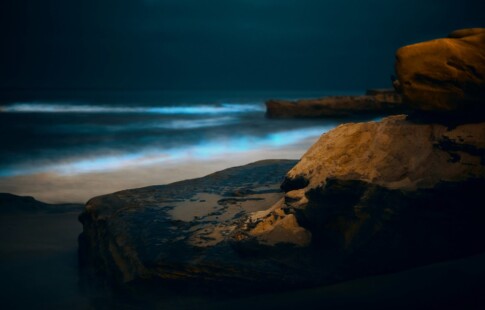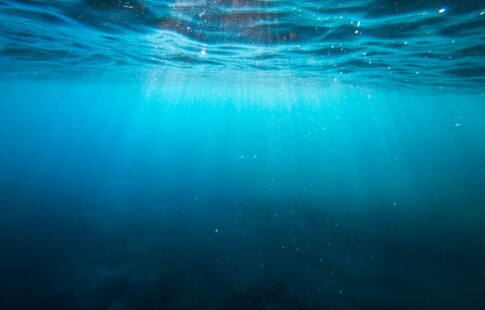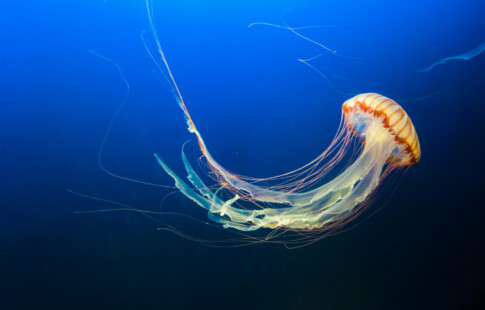
The Role of the Ice Shelf in Slowing Down Climate Change (And What Happens When They’re Gone)
We are reader-supported. When you buy through links on our site, we may earn affiliate commission.
Ice shelves — the massive floating extensions of continental ice sheets — are crucial in Earth’s climate system. They act as natural barriers, holding back glaciers and slowing the flow of ice into the ocean. Without them, the pace of glacial ice shelf loss accelerates, directly contributing to rising sea levels and disrupting global climate patterns.
But in recent decades, ice shelves have been thinning, cracking, and, in some cases, collapsing entirely. These changes are not just a concern for polar regions — they have far-reaching consequences for coastal communities, ocean circulation, and global weather systems. Understanding the role of ice shelves and the risks associated with their loss is essential for anyone concerned about the future of the planet.
What Are Ice Shelves and Why Do They Matter?
Ice shelves form where glaciers or ice sheets extend onto the ocean’s surface. Unlike sea ice, which forms from frozen ocean water, ice shelves originate from land-based ice. Their sheer size and location make them critical in regulating ice flow from the interior of ice sheets to the ocean.
The importance of ice shelves can be summarized in three key functions:
- Buttressing effect: Ice shelves act as natural dams, holding back glaciers that would otherwise flow rapidly into the sea. Without this resistance, glacier flow speeds up, leading to an increase in ice mass entering the ocean.
- Sea-level regulation: Because ice shelves are already floating, their melting does not directly contribute to sea-level rise. However, their loss indirectly accelerates sea-level rise by allowing glaciers to flow more freely into the ocean.
- Influencing global ocean circulation: The melting and freezing cycles of ice shelves contribute to the formation of cold, dense water masses that drive ocean currents. These currents are vital to regulating climate patterns worldwide.
How and Why Are Ice Shelves Melting?
Scientists have identified multiple factors contributing to ice shelf thinning and collapse. Some processes operate below the ice, some above, and some from within. Together, they form a dangerous feedback loop that accelerates ice loss.
Surface Melting From Higher Temperatures
Warmer air temperatures cause surface ice to melt, creating meltwater ponds. These ponds can seep into cracks, refreeze, and expand, causing the ice to fracture further — a process called hydrofracturing. This caused the dramatic collapse of the Larsen A and B Ice Shelves in 1995 and 2002, respectively.
Ocean Warming
Warm ocean currents are eroding the undersides of ice shelves, causing them to thin and weaken over time. This process, known as basal melting, is particularly concerning in West Antarctica, where some of the fastest-melting ice shelves are located.
Calving Events
As ice shelves weaken, they are more prone to large calving events, where massive chunks of ice break off and float away. While calving is a natural part of an ice shelf’s life cycle, increased frequency and intensity of calving events signal instability and impending collapse.
Ice Shelf Collapse as a Tipping Point
Once an ice shelf reaches a critical level of thinning, it can collapse rapidly, sometimes in a matter of days. This is considered a climate tipping point — an irreversible change in the Earth’s system that accelerates global warming.
The Collapse of Major Ice Shelves: A Warning Sign
Recent ice shelf collapses have demonstrated just how vulnerable these structures are.
- Larsen B Ice Shelf (2002): This Antarctic ice shelf, which had been stable for over 10,000 years, shattered in less than a month. Scientists attribute its collapse to a combination of warm ocean currents and surface meltwater-induced fracturing.
- Larsen C Ice Shelf (2017): One of the largest icebergs ever recorded, A-68, broke off from Larsen C, reducing the shelf’s total size by 10 percent.
- Thwaites Ice Shelf (Present-Day Concerns): Often referred to as the “Doomsday Glacier,” Thwaites is showing signs of destabilization. If it collapses, it could contribute up to 65 centimeters to global sea-level rise, with further destabilization leading to an even greater increase.
What Happens When Ice Shelves Disappear?
The consequences of ice shelf loss extend far beyond the polar regions.
Accelerated Sea-Level Rise
The most immediate impact of ice shelf loss is the acceleration of glacier flow into the ocean, directly contributing to rising sea levels. Coastal cities such as New York, Miami, and Jakarta are already facing increased flooding risks, and future ice shelf loss could make these threats more severe.
Disruption of Ocean Circulation
The influx of freshwater from melting ice shelves alters ocean salinity and density, disrupting major ocean currents like the Atlantic Meridional Overturning Circulation. This could lead to more extreme weather patterns, including harsher winters in Europe and intensified hurricanes in the Atlantic.
Threats to Marine Ecosystems
Beneath ice shelves, unique marine ecosystems thrive in cold, stable conditions. The loss of these ice shelves can disrupt food chains and threaten species adapted to life in the deep Antarctic waters.
Increased Carbon Release from Permafrost
As ice shelves collapse and expose more land ice to melting, permafrost regions could thaw more quickly, releasing stored methane and carbon dioxide into the atmosphere. This would further accelerate global warming.
Can Ice Shelves Be Saved?
While the overall trend of ice shelf loss is concerning, scientists are exploring ways to slow down the process.
Improved Monitoring and Research
The more scientists better understand how ice shelves are changing, the better they can predict future collapses and model their global impacts. New technologies are helping researchers observe ice shelves in unprecedented detail, providing crucial data to guide climate change strategies:
- Satellite observations: The European Space Agency uses satellites such as CryoSat to track ice shelf thinning, calving events, and temperature changes in real time. These observations help scientists create more accurate climate models and identify at-risk ice shelves before they collapse.
- Autonomous Underwater Vehicles (AUVs): Underwater drones like Icefin are being deployed beneath ice shelves to study basal melting processes. These AUVs navigate beneath the ice, gathering data on water temperature, salinity, and ice shelf thickness — information that was previously difficult to obtain.
Climate Policy and Emission Reductions
Reducing greenhouse gas emissions remains the most effective way to slow ice shelf loss. Treaties like the Paris Agreement aim to limit global warming to below two degrees Celsius, which could help preserve Antarctic and Arctic ice.
Geoengineering Proposals
Some scientists have proposed geoengineering solutions, such as:
- Reflective materials: Sprinkling reflective materials on ice to reduce absorption of sunlight and slow melting.
- Artificial snowfall: Pumping seawater onto ice sheets and freezing it to strengthen ice shelves.
While these ideas are still experimental, they highlight the urgency of finding solutions to prevent further ice shelf loss.
The Urgency of Protecting Ice Shelves
Ice shelves are not just frozen landscapes at the ends of the Earth — they are critical regulators of the planet’s climate and sea levels. Their collapse represents a tipping point that could accelerate global warming, disrupt ocean currents, and endanger coastal populations.
By investing in scientific research, supporting climate policies, and reducing carbon emissions, humanity has the opportunity to slow ice shelf loss and mitigate its worst impacts. The time to act is now — before the next major collapse reshapes the world forever.
Share on
Like what you read? Join other Environment.co readers!
Get the latest updates on our planet by subscribing to the Environment.co newsletter!
About the author
Maria Visser
Maria serves as the Assistant Editor of Environment.co. A true foodie and activist at heart, she loves covering topics ranging from veganism to off grid living.





